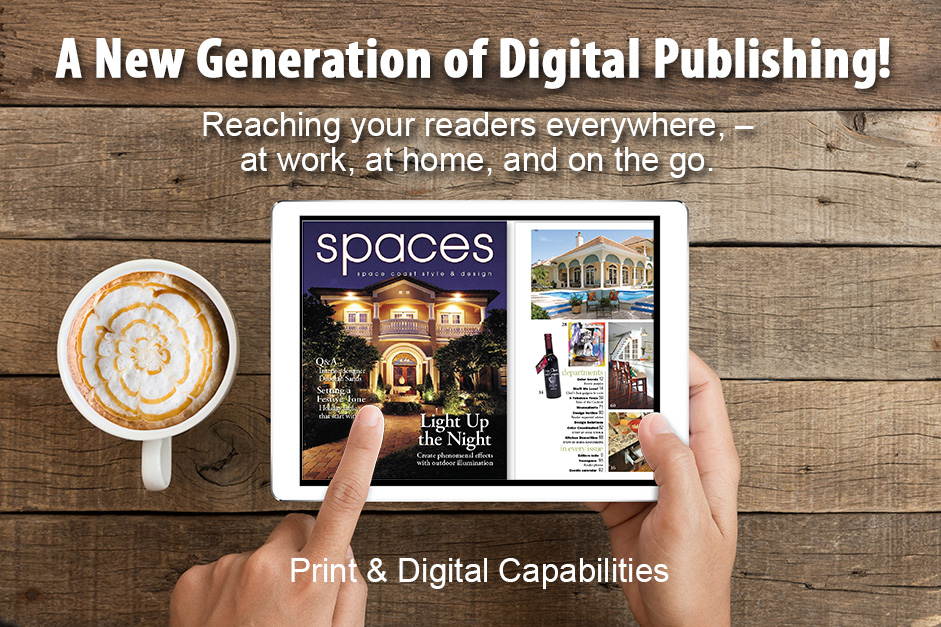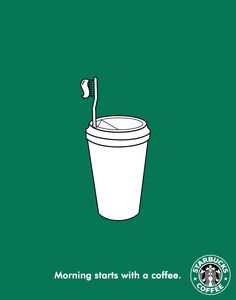
Mobile outdoor advertising allows companies the ability to customize ads on vehicles. This form of advertising gained popularity over a decade. It has the advantages of being mobile, flexible, and cost-effective. It can also reach audiences where traditional billboards are not possible. A mobile billboard can be tailored to size, shape, and message, and it can be rented for short or long term periods.
Outdoor advertising offers the first benefit of this type of advertising: it can be delivered to people who aren't able see other types. You can reach your audience during peak traffic times. Because it can be leased quickly and can target multiple demographics simultaneously, mobile advertising is cost-effective.
This type of advertising has the second advantage of being able to create brand awareness. The ads are easily visible from all locations, making them more noticeable to passers-by. It is also less likely that a driver will ignore the advertisement. The message can be repositioned, changed and expanded if necessary.

One drawback to outdoor advertising like this is its difficulty measuring its impact. Many advertisers rely on guessing as the main method of assessing the effectiveness of their campaign. The industry has created a system to measure and report the impact of mobile billboard campaigns. The industry can determine the impression rates of mobile outdoor ads by using a database.
This industry also collects information about vehicles and their location. This data is used by the industry to evaluate the effectiveness a mobile advertising campaign. Using this data, the industry calculates the cost per impression.
Other forms of outdoor media include mall/airport advertising, radio, and television. Some forms are better than others. Mobile billboards can be a powerful way to increase awareness among consumers. Advertisers tend to consider television and radio the most effective mediums, but there are other options.
Mobile outdoor marketing is a wonderful form of OOH advertisement. It is important for companies to make a lasting, positive impression on customers in a market with so much competition.

Big Impact Media is able to help you advertise in your area or reach a national audience. Their products include relocatable and mobile billboards as well as walking boards, bicycling boards, and digital advertising trailers. They can help you grow your brand. They offer a single-stop shop for high impact outdoor mobile advertising campaigns.
The best outdoor mobile advertising technology can help you increase brand visibility and generate more ad impressions. Although it has its limitations, this type of out of home advertising still works well for brand building.
FAQ
What is an ad-campaign?
An advertisement campaign is a series containing advertisements to promote a product. It may also refer to the entire production of such ads.
The Latin word "to sell" gave rise to the term "ad". Marcus Terentius Varro, 116-27 BC, was the first to use it. He used it as a verb that meant "to make a sales."
Advertising campaigns are most often done by large agencies or businesses. Advertising campaigns can involve many media types, such as television, radio, print, and the internet.
Advertising campaigns last several months and are usually focused on specific goals. One example is that some campaigns seek to create awareness while others are more focused on increasing sales.
What should you know about TV advertising?
Television advertising can reach a lot of people quickly and is very effective. It was also very costly. However, if you use it well, it can be incredibly powerful.
While there are many types and styles of TV ads, most share some common traits. The first thing to remember when planning any type of TV ad is to ensure it fits into its category. Do not attempt to run a lifestyle advertisement as a product advert. Your message must be consistent throughout the campaign.
Remember that prime-time is the best time for your ads to be aired. This is because most viewers watch TV while relaxing in front of the set. You want them to be comfortable enough to listen to your words.
Last but not least, just because you have a lot of money does not mean that you will get great results. In fact, the opposite may be true. A study conducted by the University of California found that commercials aired during popular shows were less likely to sell products than those aired during unpopular shows. You should ensure that you spend your money wisely if you plan to advertise on television.
How can I choose my target audience
Begin by talking to yourself and people close to you. You might be unsure where to begin. Ask yourself: "Whom am I trying to reach?"
Ask yourself these questions: Who are the most influential people in my industry? What are their daily problems? Which are the smartest people working in my field? Where do they hang out online?
Rewind to the beginning, when your business was founded. Why did you begin? What was your problem and how did it solve?
These answers will allow you to determine who your ideal customers are. You'll also learn more about what makes them tick and why they buy from you.
You can also look at your competitors' websites and social media pages to find clues about whom they cater to.
Once you've identified your target customers, you'll need to decide which channel(s) to use to reach them. A website might be created to reach home buyers, for instance, if your business provides services to agents in real estate.
You could create a blog if you offer software to small business owners.
A Facebook page for teens could be set up if you are a clothing seller. You could also set up a Twitter account if your restaurant is a business owner to help parents find kid-friendly restaurants.
This is the point: There are many ways to communicate your message.
What is an advertisement buyer?
Advertisers buy advertising space on television, radio, and print media.
Advertisers are paid for the time that their message will appear.
They do not always look for the best ads, but are looking for the most effective to reach their target audience.
An advertiser might have information specific to their potential customers such as age and gender, marital status or occupation, hobbies, interests, income, etc.
This data can be used by the advertiser to decide which media is most effective for them. Direct mail might be more effective with older customers, for example.
Advertisers also consider the competition. Advertisers may decide to place their ads in close proximity to similar businesses.
Advertisers must also take into account the size of their budget as well as the time it will take to spend the money before it expires.
Is there any way to get free traffic?
The traffic that is free comes from organic search results and does not require you to pay for ads. This type of traffic is known as organic traffic or natural traffic. There are many options to get free traffic like article marketing and social media marketing.
Article Marketing is a popular way to get traffic for free. It has an extremely low cost-per-click (CPC). The CPC is usually very cheap compared to paid ads. Content marketing is also known by the term article marketing.
Social Media Marketing: Social media sites such as Facebook, Twitter, LinkedIn, and LinkedIn make it easy to promote your company through advertising. These social media platforms can be used to post updates and share photos. You may also build relationships with potential customers. Many businesses choose to buy ad space in social media because they want a wider reach at a reduced price.
Blogging - Blogging is another great way to generate free traffic. If you create quality content that people love to read, visitors will find you. Once your blog is attracting visitors, it's possible to make money from it by selling products and/or services.
Email Marketing - Email marketing has been around since the early days of the Internet, but today it still remains one of the best ways to drive traffic to your website. You can grow your list and eventually sell to subscribers by sending them emails frequently.
What do you need to know about print advertising?
Print advertising is an effective way to reach consumers. Print advertising is used extensively by companies to promote their products or services. The goal is to get the consumer's attention.
Print ads are usually one page in length and can include text, images and logos. Print ads can also contain sound, animation, videos, and hyperlinks.
These are the main types of print ads:
1. Brochures – These are large format printed pieces that are intended to draw people into stores. Brochures are filled with eye-catching designs, colorful pictures, and attractive graphics.
2. Catalogues - These are smaller versions of brochures. They are typically sent to customers who have requested information on specific items.
3. Flyers - These are small pieces of paper distributed at events such as concerts and fairs. If they are given out at retail outlets, they can be obtained for free, but you must pay for them.
4. Posters – These are larger versions for flyers. They are often displayed on walls, fences, or buildings. They are usually made using computer software programs, which is designed to draw the eye of passersby.
5. Direct mail: These are postcards or letters that are sent directly by post to potential customers. These cards are sent by companies periodically to remind their customers about their company.
6. Newspaper Ads are placed in newspapers and magazines. They are usually very long and contain text and images.
How much does it take to advertise on social networks?
This route is not for everyone. You will be charged monthly based on how much time you spend on each platform.
Facebook - $0.10 Per 1,000 Impressions
Twitter - $0.20 per 1,000 impressions (if you tweet)
Send out invitations on Linkedin for $0.30 per 1000 impressions
Instagram - $0.50/1000 impressions
Snapchat - $0.60 for 1,000 impressions ($0.40 Per User)
YouTube - $0.25 Per 1,000 Views
Tumblr: $0.15 per 1,000 impressions of text posts
Pinterest - $0.05 per 1,000 impressions per month
Google+ - $0.15 to $0.0.20 per 1,000,000 impressions
Tumblr – $0.15 - $0.20 per 100,000 impressions
Vimeo - $0.20 to $0.25 per 10,000 impressions
Soundcloud - $0.20 - $0.0.25 for 1,000,000 plays
StumbleUpon - $0.20 -$0.25 per 1 billion pageviews
Digg – $0.20 - 0.25 per 1000 diggs
Reddit: $0.20-$0.25 for 1000 comments
Wordpress $0.20-$0.25 per 500 Comments
Flickr - $0.20 -- $0.25 per 5,000 photo uploads
Statistics
- Worldwide spending on advertising in 2015 amounted to an estimated US$529.43 billion. (en.wikipedia.org)
- It collects money from the advertisers, keeps 32% for its role in facilitating the process, and the remaining 68% goes to the publisher (you). (quicksprout.com)
- It's 100% reliant on your website traffic. (quicksprout.com)
- Nonetheless, advertising spending as a share of GDP was slightly lower – about 2.4 percent. (en.wikipedia.org)
External Links
How To
How to Make Sponsored Ads On Facebook
Facebook is one of most-used social networking sites. The global population is 1.79 billion. This number continues to grow every day.
Facebook is completely free. However you can pay to reach specific audiences. Paid advertising options include promoted posts and banners.
Log into the existing app if you already have it registered. Or click "Create New App." Next, follow these steps.
-
Click "Add Platform" in the Apps section.
-
Select "Advertising", then click on Continue.
-
Fill out the form and submit it.
-
After approval, you'll receive a Client ID (and Secret key). Copy them.
-
Copy the keys and paste them into the fields.
-
Select the currency and enter the name of the campaign.
-
Click "Begin Campaign"
-
Follow the steps until the banner appears. The URL will be copied and you can return to Facebook.
-
Paste your code in the box provided by Facebook.
-
Click "Save Changes."
-
Your ad is now live!
-
You can repeat steps 10 through 12 for every additional banner you create.
-
Once you are done, click "Continue", and continue with the process.
-
Finalize the creation of your ad groups.
-
To view all your campaigns, click on the "View All Ads” button once you have completed.
-
Click "Remove ads" next to each ad to remove it.
-
If you are not seeing results after running your campaign check that you have followed the directions.
-
Make sure to check the dates of your campaign.
-
Make sure you set your budget appropriately.
-
Make sure to save your changes.
-
Before you click "Submit", make sure to review the settings.
-
You can wait for your ads on your timeline to appear.
-
Congratulations for a job done well!
-
Let's now look at some tips to improve your results.